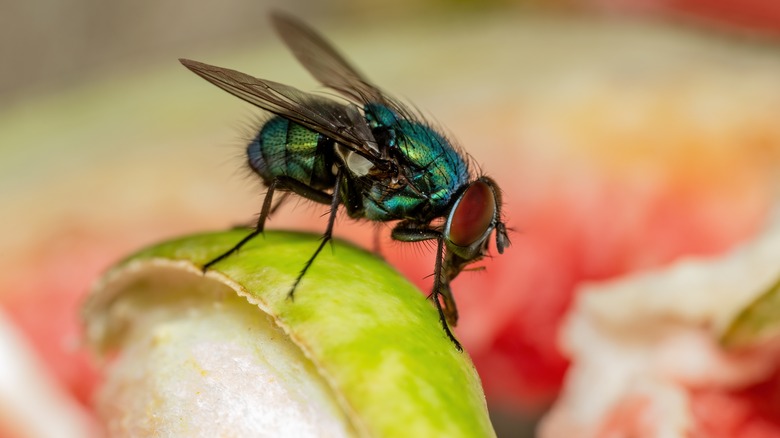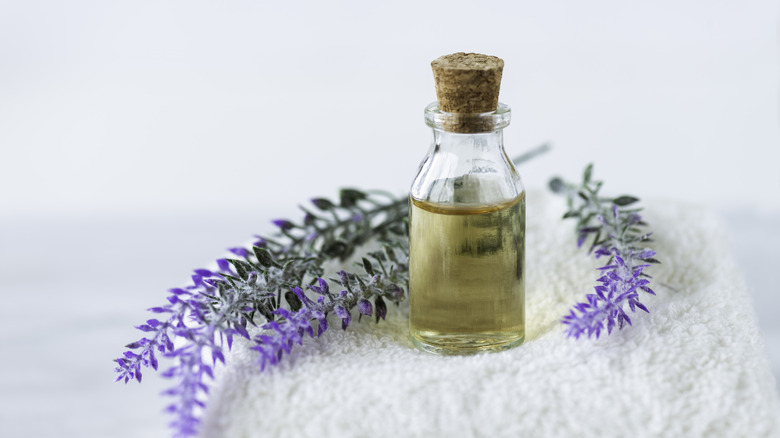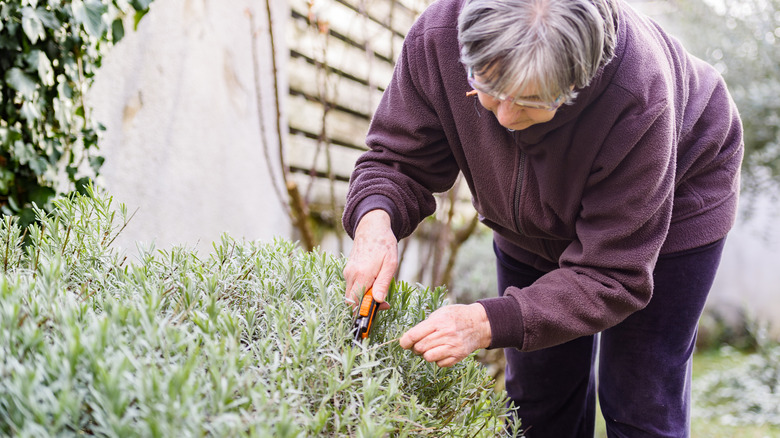The Beautiful Fly-Repelling Plant You'll Want To Have In Your Garden
As a gardener, flies can sometimes ruin your little paradise. One natural way to repel these winged invaders is by planting lavender in your garden. Native to the Mediterranean region, this hardy perennial with vibrant purple flowers is a multi-purpose asset to any garden, and the key to its fly-repelling properties lies in its oils. Although some fly species help control pests, others are more than just a nuisance and pose a significant problem in your garden for several reasons. First, they are known to spread diseases, which can compromise the health of your plants, including plant infections, making your once-thriving greenery susceptible to decay. Secondly, flies attract other pests. Their presence often lures in other predatory insects, creating another layer of issues for your garden. Finally, flies can disrupt the growth cycle of plants by interfering with pollination; the constant buzzing around of robber flies, for example, can deter beneficial pollinators like bees from doing their essential work. Overall, flies create a less-than-ideal environment for your garden.
Luckily, being a hardy perennial, lavender can return year after year, helping prevent a fly infestation. Besides being beneficial for pest control, the plant is multifunctional. Its leaves and flowers are often used in various applications, from culinary recipes to homemade skincare, adding another layer of usefulness to its presence in your garden.
How lavender's oils keep flies at bay
The essential oils found in the lavender plant are the magic ingredient for keeping flies away from your home and garden. Specifically, the compound linalool in lavender oil acts as a natural insecticide, per Jersey Lavender, and when flies detect this aromatic compound, they make a beeline in the opposite direction. Interestingly, a research study published in the Journal of Asia-Pacific Entomology points out that linalool especially puts adult flies off when compared to their younger counterparts, the nymphs. Since adult flies are the ones laying eggs and escalating the pest situation in your garden, their aversion to linalool means you're directly tackling the core of the problem, keeping potential infestations in check.
Another significant advantage of using lavender is its safety profile. Linalool is generally non-toxic to humans and animals, per Jersey Lavender. This offers you a responsible, ecologically sound way to manage pests. It stands in contrast to many chemical insecticides that can adversely affect other insects beneficial to your garden, not to mention posing risks to children and pets. It's a balanced approach that protects your loved ones, while maintaining the ecological balance in your garden.
As the plant matures and blossoms, it continually releases its oils into the air and soil, and this enduring release provides an ongoing barrier against flies. Thanks to the long-lasting effects of lavender's scent, you're not stuck in a loop of applying treatments every few days or weeks.
Strategically planting lavender for maximum effectiveness
If you're already dealing with a fly problem, you can strategically choose where to place your lavender plants, opting for areas where flies are most commonly seen. You can either plant seeds or, for quicker results, purchase mature plants. Consider adding a lavender essential oil diffuser in your garden to further augment the fly-repelling effect. This not only amplifies the existing aroma from the plants, but also disperses the essential oils over a larger area, providing a kind of scent barrier against flies.
When it comes to taking care of your lavender, it's pretty straightforward. Lavender loves a sunny environment and soil that drains well. Interestingly, lavender isn't too picky about soil quality; it even does well in less fertile ground. This adaptability makes it a great candidate for those less-than-perfect spots in your garden that don't suit other plants. To sidestep the risk of root rot, keeping the soil on the drier side is crucial, as lavender is a drought-tolerant plant by nature. Watering schedules are fairly minimal: seeds you've recently planted need watering once a week, while mature plants only require hydration every two weeks. Seasonal pruning, especially in the fall and summer, helps maintain plant health and promote new growth. This is key because frequent pruning stimulates the production of essential oils, enhancing the plant's natural ability to deter flies.


